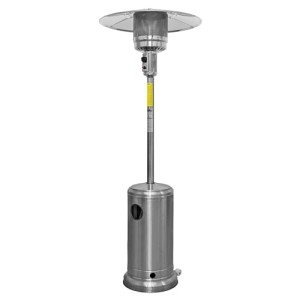The Essential Guide to Buying Patio Heating: Everything You Need to Know
As the weather condition turns cooler, lots of property owners start to think about how to extend their outdoor home into the chilly months. Patio heating permits comfortable events under the stars, boosting year-round usability of outdoor patios, decks, and gardens. This short article will provide a comprehensive summary of patio heating options, factors to consider when purchasing, and responses to frequently asked questions.
Kinds Of Patio Heaters
Patio heaters can be found in various styles and performances, each dealing with different user requirements. Here's a breakdown of the most popular options:
1. Propane Patio Heaters
- Description: These portable heaters run on propane gas cylinders.
- Advantages:
- Easy to move and set up.
- Supplies immediate heat.
- Ideal for bigger outdoor locations.
- Factors to consider:
- Requires routine refilling of propane tanks.
- May be limited by local policies on outdoor gas appliances.
2. Natural Gas Patio Heaters
- Description: Connected directly to a gas line.
- Advantages:
- No requirement for refilling; a continuous supply of hot gas.
- Cost-efficient in the long term for regular use.
- Considerations:
- Requires professional setup.
- Less portable than propane heaters.
3. Electric Patio Heaters
- Description: Heaters powered by electrical energy.
- Advantages:
- Easy to set up and utilize; simply plug them in.
- Ideal for little gatherings and limited outdoor areas.
- Considerations:
- Less powerful than gas heaters; may not heat up big areas effectively.
- Needs access to electric outlets.
4. Infrared Heaters
- Description: Heaters that utilize infrared technology to warm objects and people directly rather of heating the surrounding air.
- Benefits:
- Highly energy-efficient and eco-friendly.
- Rapid heat without waiting.
- Factors to consider:
- Effectiveness can be restricted by wind.
- Typically more expensive than standard heaters.
5. Fire Pits and Tabletop Fireplaces
- Description: Open flame units that can also work as stylish outdoor design.
- Benefits:
- Multifunctional; supplies heat and ambiance.
- Factors to consider:
- Requires continuous supervision and maintenance.
- Less efficient heat circulation compared to other heaters.
Aspects to Consider When Buying Patio Heaters
Investing in patio heating needs careful consideration to guarantee you purchase an unit that meets your particular needs. Below are essential aspects to assess:
- Size of the Area:
The primary factor to consider is the size of the outdoor space you wish to heat. Larger patios might require more effective heaters or multiple systems to disperse heat efficiently. - Heating Capacity:
This is measured in BTUs (British Thermal Units). Generally, higher BTU ratings indicate a heater that can create more heat. - Mobility and Placement:
Determine whether you prefer a portable option or a repaired setup. Consider where you plan to place the heater, and how often you may need to move it. - Fuel Source:
Evaluate your preference for propane, gas, or electric designs based upon availability and convenience. Each fuel type has associated expenses and considerations. - Safety Features:
Opt for models geared up with safety functions such as tip-over protection and automated shut-off. This is essential when utilizing heaters in outdoor areas. - Design and Aesthetics:
Choosing an aesthetically appealing heater can enhance your outdoor atmosphere. Try to find options that complement your existing furnishings and design. - Weather Resistance:
If the heater will remain outdoors all year, think about models developed to endure numerous weather components such as rain or snow.
Comparison Table of Patio Heaters
| Type | Heat Source | Mobility | Cost Range | Pros | Cons |
|---|---|---|---|---|---|
| Propane Patio Heaters | Propane Gas | High | ₤ 100-₤ 400 | Instantaneous heat, portable | Needs refilling, regional regulations |
| Natural Gas Heaters | Natural Gas | Low | ₤ 300-₤ 700 | Constant supply, cost-efficient | Requires installation |
| Electric Patio Heaters | Electricity | High | ₤ 50-₤ 300 | Easy to use, no fuel needed | Limited range and heat |
| Infrared Heaters | Electrical power | Medium | ₤ 150-₤ 500 | Efficient, instant heat | Wind effects, greater expense |
| Fire Pits/ Fireplaces | Wood/Gas | Variable | ₤ 100-₤ 600 | Ornamental, multifunctional | Needs supervision, maintenance |
FAQs About Patio Heating
1. The number of BTUs do I require for my patio?
The number of BTUs needed depends on the size of your patio. A basic guideline is:
- Up to 20 sq ft: 10,000 BTUs
- 20-50 sq feet: 20,000 BTUs
- 50-100 sq feet: 30,000 BTUs
2. Are patio heaters safe to use?
Yes, as long as safety standards are followed. Look for heaters with safety features and guarantee they are run in well-ventilated locations.
3. Can electric patio heaters be utilized indoors?
It is not recommended to utilize outdoor heaters inside your home due to the danger of fire and carbon monoxide accumulation. Constantly confirm High-Quality Heaters .
4. What is the average expense to run a patio heater?
Running costs vary commonly based upon the kind of fuel and energy prices in your location. For electric units, typical usage might cost around ₤ 0.07-₤ 0.30 per hour.
5. How do I maintain my patio heater?
Regular maintenance includes cleaning up out any particles, checking gas connections for leaks, and ensuring that electrical elements are protected and working.
Investing in patio heating is an exceptional method to extend the pleasure of outdoor areas well into the cooler months. With numerous options readily available, possible purchasers need to assess their unique needs, space dimensions, and preferred heating approaches. By considering the aspects and contrasts provided in this article, property owners can make a knowledgeable choice and guarantee their patio stays a comfortable social center throughout the year.

